When you think of snowboarding, you probably imagine it as a winter sport that can only be enjoyed during the coldest months. But in reality, you can still have plenty of fun snowboarding in March or even April!
In fact, spring snowboarding comes with a lot of unique advantages that you can’t get in the middle of winter.
If you’re thinking, “I was too busy in January and February… I guess I missed my chance to go snowboarding this year,” — don’t give up just yet!
In this article, we’ll introduce ski resorts where you can still enjoy snowboarding in March, explain what the snow conditions are like, and go over the many benefits of spring snowboarding—especially for beginners.
How Long Can You Snowboard Each Season?
Although snowboarding is often thought of as a “winter-only” sport, the season actually lasts longer than most people think.
In general, you can snowboard all the way through the end of April, and some resorts even stay open until Golden Week (early May)!
Of course, this varies depending on where you live. In Hokkaido, where we offer our snowboarding lessons, many resorts stay open until the end of April. And with direct flights from Tokyo, Osaka, Nagoya, and even Kyushu, a 2- or 3-day trip is more than enough to enjoy some great spring snowboarding.
While snow conditions are softer compared to the midwinter months of January and February, and some courses may close as the snow melts, there’s still more than enough snow to have a great time on the slopes.
Is March a Good Time for Beginners to Snowboard?
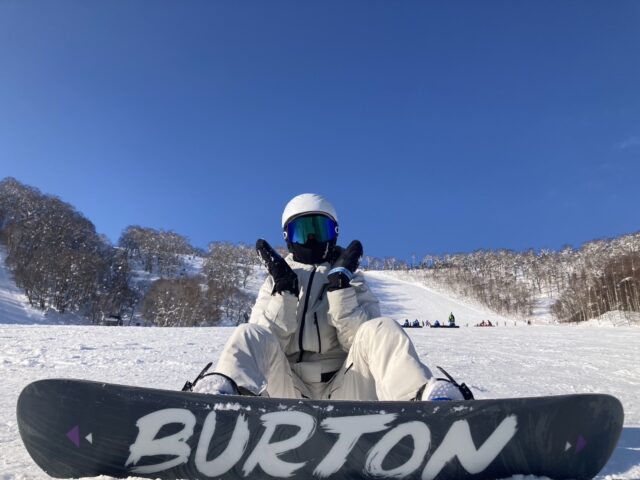
Experienced snowboarders often say that “January and February are the best months to ride.” However, for beginners, March is actually one of the best times to start!
By March, temperatures are higher and the snow becomes softer—often referred to as “spring snow”. This snow is forgiving and cushions your falls, making it perfect for beginners who are still learning and falling often.
So, what are ski resorts like in March? Let’s take a look by early, mid, and late March.
Early March
Most resorts still have plenty of snow, and the slopes look almost the same as in January or February. In Hokkaido areas like Rusutsu and Niseko, you might even get lucky and experience fresh powder snow in early March!
Mid-March
Temperatures rise during the day, and the snow starts to melt little by little. In Hokkaido, it can still snow in mid-March, but warmer weather causes it to melt faster.
The good news? The snow becomes softer and smoother—perfect for beginners to practice comfortably.
However, one thing to note is night skiing. Even though it’s spring, nights are still cold, and melted snow refreezes into hard, icy conditions that are much more difficult to ride on. Beginners should stick to daytime sessions and spend their evenings relaxing in a hot spring instead!
Late March
By late March, some ski resorts begin closing parts of their courses. You might see patches of exposed ground in lower areas. If you’re planning to ride at the end of March, it’s best to choose high-altitude resorts or those known for heavy snowfall.
Even though the snow becomes quite soft, it’s still perfectly rideable and fun.
So as long as you pick the right resort, beginners can absolutely enjoy snowboarding in March without any problems!
Recommended Ski Resorts in Hokkaido for Spring Snowboarding (March–April)
Rusutsu Resort
Rusutsu is famous for its deep, powdery snow that piles up waist-deep in January and February. Because of that, there’s still plenty left in March—and sometimes, it even snows at the end of the month!
Even if it doesn’t snow again, the huge amount of snow accumulated during the peak season lasts through early April, so you can ride almost all the courses until the resort closes. Plus, lift tickets become cheaper from mid-March, making it a great deal.
Kiroro Snow World
Kiroro also gets heavy snowfall in winter, allowing great spring riding conditions. During peak season, it’s often extremely cold—so cold that some beginners give up not because of difficulty, but because they can’t handle the freezing temperatures!
By March, however, the weather becomes milder and more comfortable. The snow remains relatively firm, which makes it ideal for those who want to practice carving turns. Kiroro also offers discounted lift tickets starting in April.
Niseko Grand Hirafu
Niseko is world-famous for its legendary powder snow, known as “JAPOW.” Because of its cold temperatures, Niseko keeps great snow conditions well into spring. Like Rusutsu, you might even catch a late-season powder day in March if you’re lucky!
Tomamu Ski Resort
Operated by the renowned Hoshino Resorts, Tomamu is another great spring destination. Located in central Hokkaido, it’s best accessed from Asahikawa Airport rather than New Chitose.
Spring brings plenty of sunny days, so you can enjoy incredible scenery and take stunning photos. On top of snowboarding, Tomamu offers a variety of fun activities unique to the resort, making it an excellent all-around destination.
Why Spring Snowboarding (March–April) Is Great for Beginners
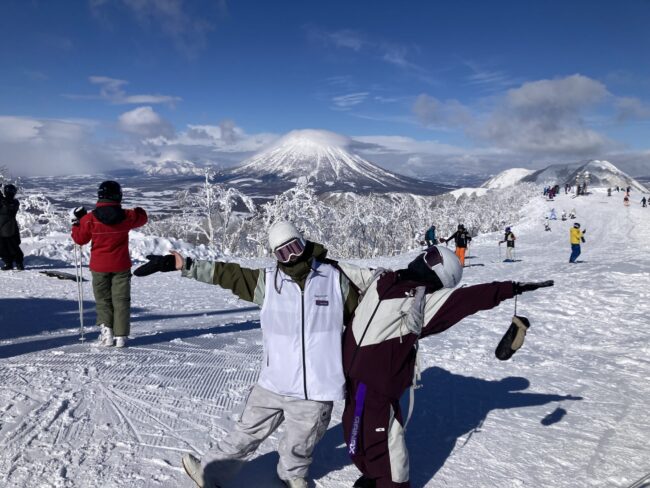
1. Warmer and More Comfortable Conditions
Compared to January or February, spring weather is much warmer and more pleasant. Even people who dislike the cold can try snowboarding comfortably in March.
You won’t need as many layers under your outerwear, and you can pack lighter for your trip. Lessons also tend to feel easier and more enjoyable in warmer weather.
2. More Sunny Days
Winter often brings cloudy or snowy days, but spring skies are typically clearer. You can snowboard under the sun and enjoy breathtaking mountain views with hints of fresh greenery.
3. Fewer Crowds
Many people assume the snow season ends after February, so slopes are less crowded in March. Beginners can practice at their own pace without worrying about bumping into others.
4. Slower Snow Speeds
Spring snow, or “slushy snow,” is softer and slower than dry powder. This makes it safer and less intimidating for beginners who are afraid of gaining too much speed.
If you become more confident and want faster runs, simply apply a spring snow wax, and you’ll glide smoothly again.
5. Cheaper Lift Tickets
Most ski resorts offer discounted lift passes in the spring season. Even if some courses close, you can ride for less and extend your stay for the same budget.
6. Easier Travel Conditions
By March, the snow on roads has mostly melted, making travel much safer and easier—especially for beginners not used to walking or driving on snow.
Tips for Beginners Snowboarding in March
Check Which Courses Are Open
As snow melts, some areas become unrideable and may close off. Before your trip, check the resort’s website for up-to-date course information.
Bring Extra Clothes
Spring snow is wetter and melts faster, which means your gloves and jacket can get soaked. Beginners also tend to fall more often, so it’s a good idea to bring extra inner layers or a change of clothes to stay dry and warm.
Manage Your Body Temperature
Even though days are warm, nights at ski resorts can still be freezing. Pack a light down jacket you can easily carry and throw on when it gets cold.
Also, remember to drink water regularly—spring riding can make you sweat more, increasing your risk of dehydration.
Protect Yourself from UV Rays
UV rays in March are surprisingly strong, and sunlight reflects off the snow, causing sunburn quickly. Always apply sunscreen and wear goggles or sunglasses to protect both your skin and your eyes.
Conclusion
You can absolutely enjoy snowboarding well into the spring season. Many resorts still have great snow coverage, and March or April can easily be considered part of the main snowboarding season.
Personally, I love snowboarding in the high season, but I also enjoy spring riding—it’s perfect for trying new tricks on soft, forgiving snow.
So why not make your snowboarding season last a little longer this year?
We are Samurai Snow Concierge, a private ski and snowboard school based in Rusutsu, Hokkaido. If you have any questions about lessons or spring snowboarding, feel free to reach out anytime—we’d be happy to help!
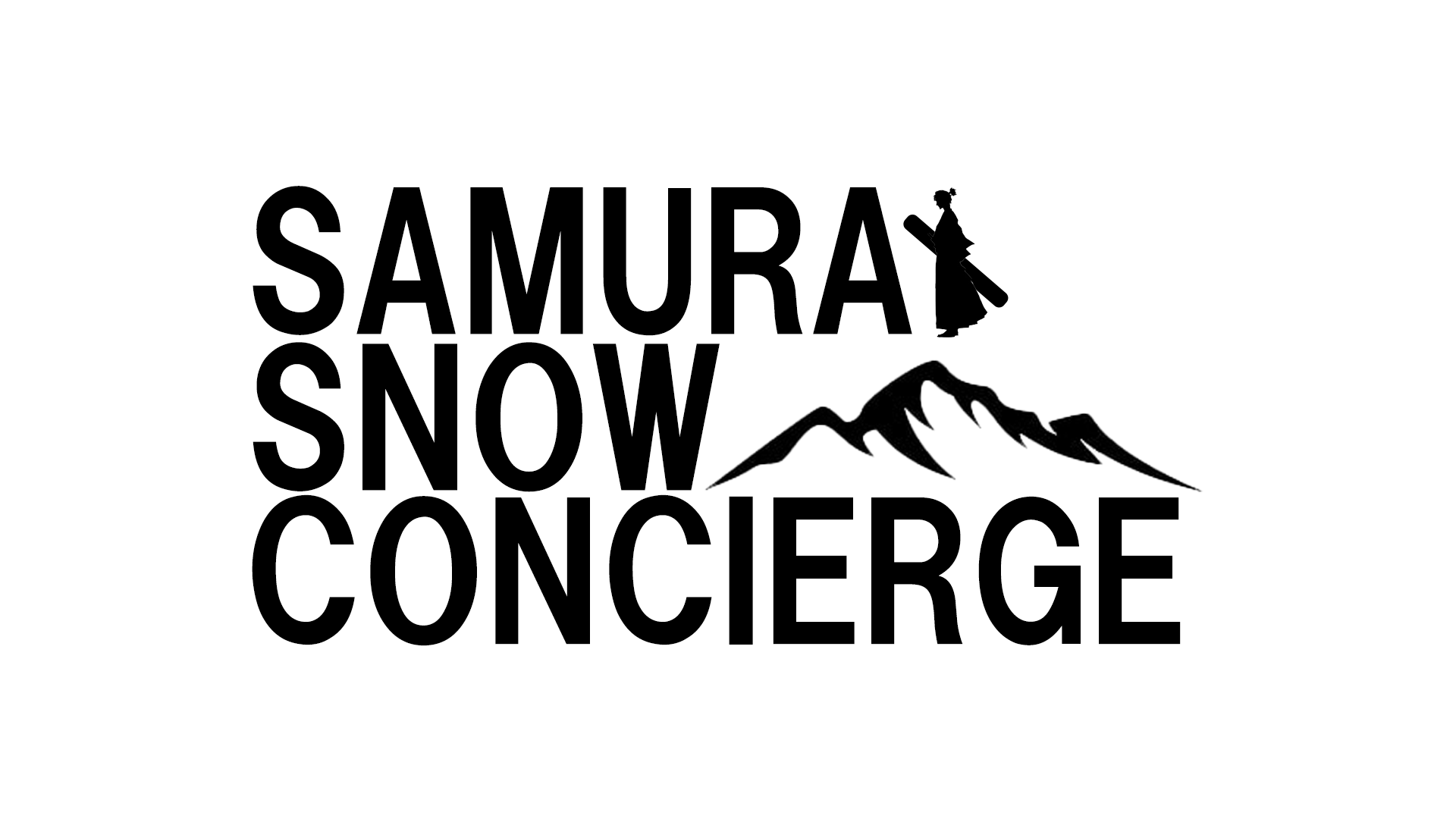
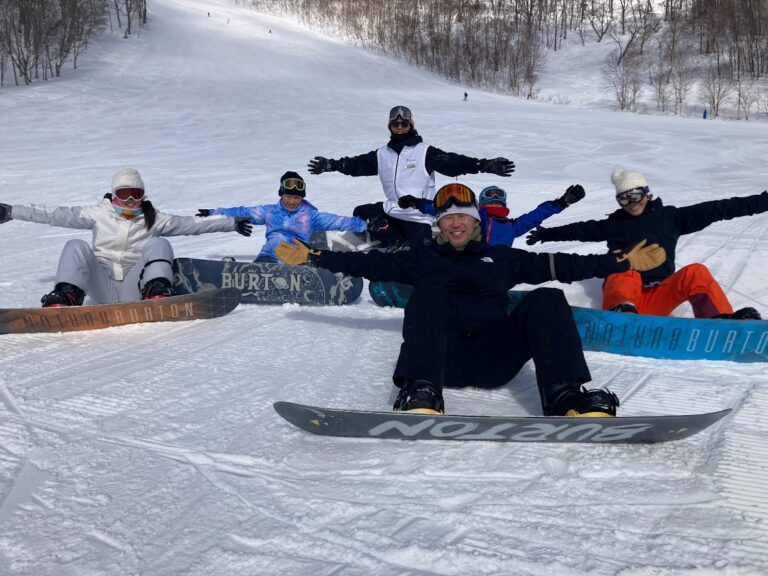


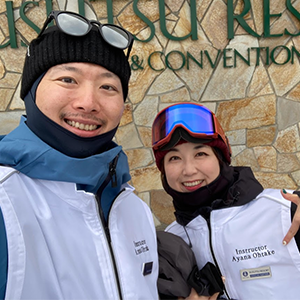
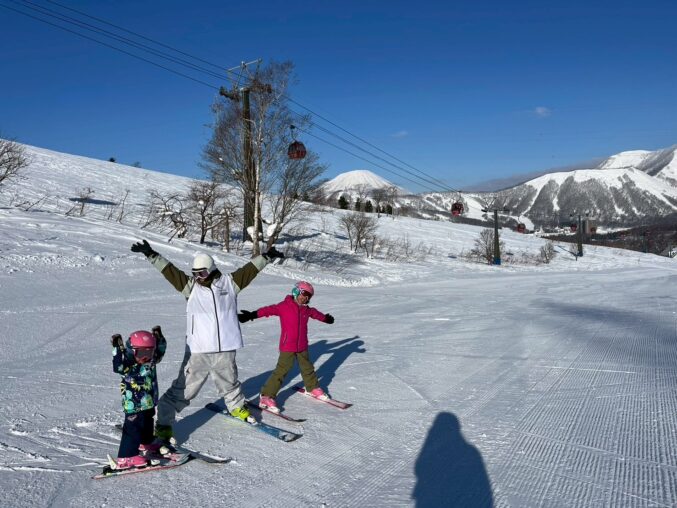




コメント